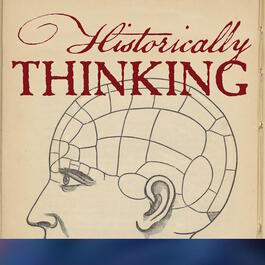
Vector: Robyn Arianrohd on the Surprising Story of Space, Time, and Mathematical Transformation
On October 16, 1843, William Rowan Hamilton was taking a walk with his wife Helen. He was on his way to preside over a meeting of the Royal Irish Academy. As Hamilton came to Broome Bridge, over the Royal Canal, the solution to a vexing problem finally emerged in front of him. He was so excited, and perhaps so afraid that he might forget, that he pulled out his penknife and carved the equation he had so suddenly conceived on the stonework of the bridge. That might not seem like such a revolutionary moment. But as my guest Robyn Arianrohd explains, Hamilton’s equation was the result of long centuries of mathematical effort. And its consequences would be immense. Because Hamilton’s thought made possible the concepts known as vectors and tensors. And vectors and tensors underlie much of modern science and technology, because they are used whenever a scientist or an engineer wants to use locations in space–everything from designing a bridge, to predicting the path of a gravitational wave; and there’s quite a lot of territory in between those two applications. That moment by the Broome Bridge ushered in a new era. Robyn Arianrohd is a mathematician, and a historian of science. Her previous books include Thomas Harriot: A Life in Science, which she and I discussed in a conversation that was published on April 30, 2019. Her latest book is Vector: A Surprising Story of Space, Time, and Mathematical Transformation. For show notes, resources, and our archive, go the Historically Thinking Substack ChaptersThomas Harriet and the Birth of Modern AlgebraNavigation, Collisions, and Early Vector ConceptsNewton's Definition of Force and DirectionAugustus De Morgan and the Formalization of AlgebraHamilton's Breakthrough: Quaternions and Four DimensionsThe Non-Commutative RevolutionJames Clerk Maxwell and Electromagnetic TheoryMaxwell's Equations and the Nature of LightThe Vector Wars: Quaternions vs. VectorsTensors: Beyond Vectors to General RelativityThe Playful Seriousness of Mathematical DiscoveryConclusion: The Journey into History of Mathematics
From "Historically Thinking"


Comments
Add comment Feedback